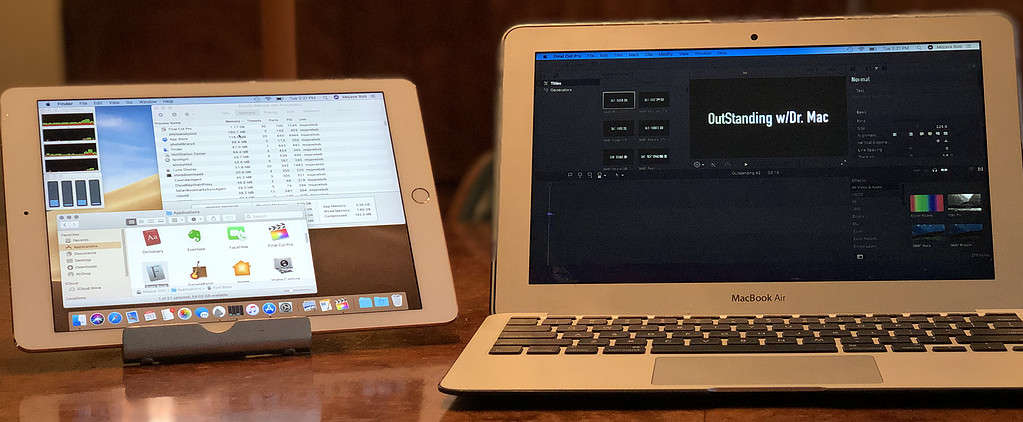Two Displays Are (Still) Better Than One
Dr. Mac’s Rants & Raves
Episode #306
As you know, I’m obsessed with personal productivity on my Macs and iDevices. As a result, I spend a lot of time searching for ways I can perform a task better, faster, or more elegantly.
Long ago (in the late 1980s) I determined that the number one productivity booster for my Mac was screen real estate. And so, for as long as I can remember I’ve had 2 displays attached to whatever Mac sat on (or under) my desk.
That makes me uber-productive when I work at home; the issue is (and has always been) with travel, and I travel a lot. While my MacBook Pro’s built-in 15-inch Retina display is a fantastic piece of glass, having to work on a single screen slows me down. With two displays I can arrange five, six, or more windows from different apps and switch among them with a click; on a single display, windows cover windows and everything gets stacked up in a jumble, so it takes more time and effort to find the window I need quickly.
Years ago I tried a couple of cheap USB “travel displays” but they were too bulky and heavy to use for long. Then I found Duet Display ($9.99 in the iOS App Store), which turns almost any iPad or iPhone into an external display for your Mac. I had tried apps that let you use your iPad as a second screen via Wi-Fi, but while they all worked, none of them worked as well as I wanted. Video rarely worked and there was noticeable lag when I moved anything on that screen.
Duet Display: A Software Solution That Mostly Works…
Duet Display, developed by ex-Apple engineers, eschews Wi-Fi. Instead, you connect your iDevice to your Mac with the same USB cable (Lightning or Dock Connector) you use to charge or sync your device. Then, just launch the free Duet Display app on your Mac and the Duet Display app on your iPad, and in seconds it behaves like a second monitor on your Mac.
It’s pretty awesome for a $10 app and I’ve used it for several years when I traveled. But it was far from perfect. It’s not wireless (it requires a standard USB-to-Lightning cable); it doesn’t support Retina resolutions on the iPad; and it doesn’t support GPU acceleration, so some apps (graphics and video editing apps in particular) feel sluggish on the Duet Display-enabled iPad.
Luna Display: A Reasonably-Priced Dongle That Works Better
Then, last month, I discovered a reasonably-priced ($79) hardware/software solution called Luna Display, which does everything Duet Display does and then some, but does it wirelessly and with no delays or sluggishness.

My second screen is an iPad…
Sadly, I’m out of space… so tune in next week for the thrilling conclusion. (Spoiler alert – it’s mostly excellent.)
RESOURCES
Duet Display: software only – $9.99.
Luna Display: hardware + software. $79.99.
0 Response to "Two Displays Are (Still) Better Than One"
Post a Comment